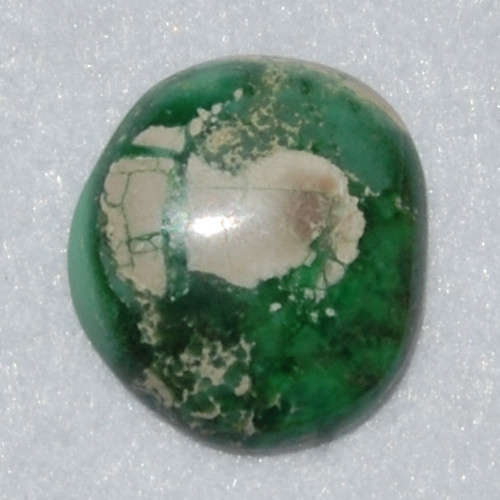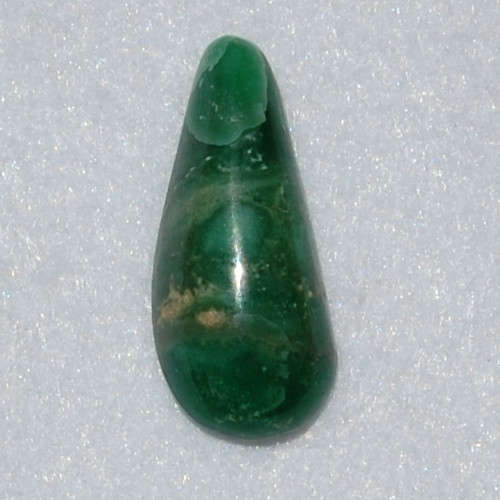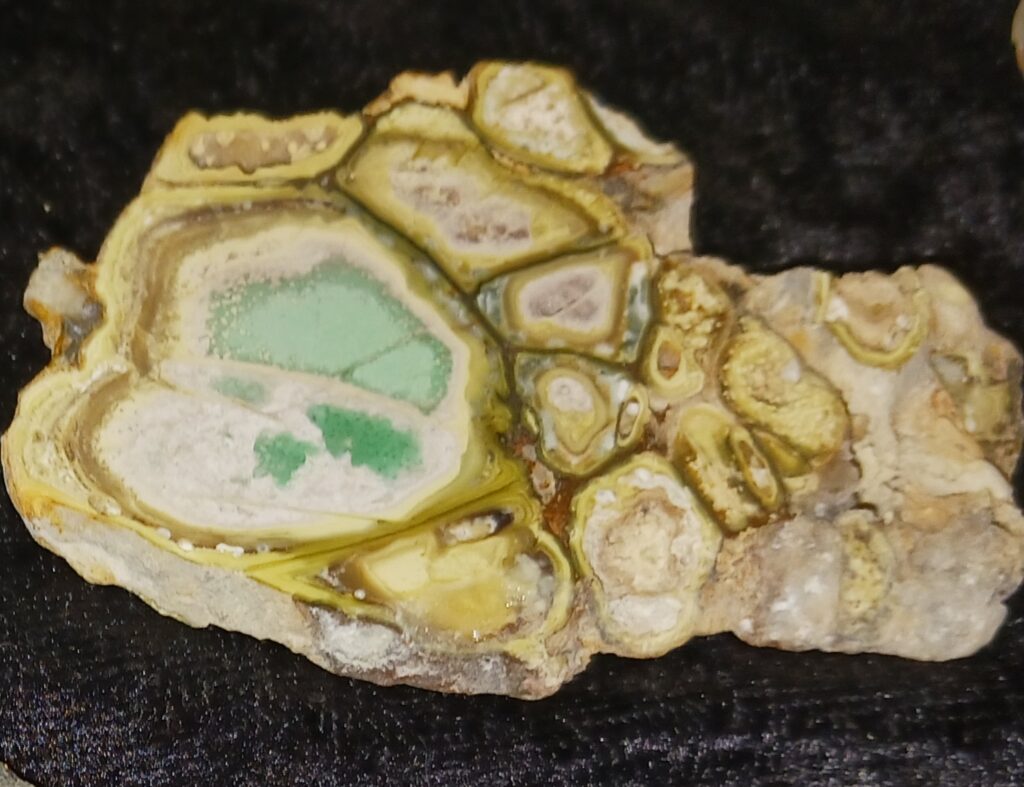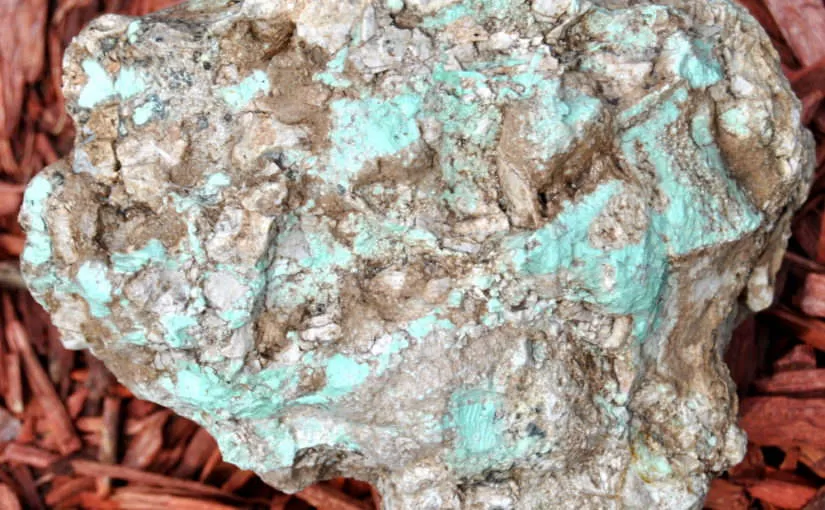
Turquoise Without the Copper
Sometimes called “Turquoise without the copper”, Variscite is a hydrated aluminum phosphate mineral (AlPO4•2H2O) and Turquoise is a hydrated aluminum and copper phosphate mineral (CuAl6(PO4)4(OH8)•4H2O), making the two minerals very similar.
Simply put, Variscite is green in color and doesn’t contain copper which gives Turquoise its blue color.
Because the two minerals are so closely related, Variscite is often mistaken for Turquoise by those who are unfamiliar with the two gemstones. This is especially true with the varieties that have dark spiderweb matrix so often associated with Turquoise.
Variscite is usually much greener than Turquoise although there are some varieties of green Turquoise that look very similar to Variscite.
Variscite is sometimes marketed as “Variquoise” to show its close relationship to Turquoise or when it’s difficult to determine if a specimen is Turquoise or Variscite.
Where Does Variscite Come From?
Although Variscite can be found in many locations around the world, the majority of high-quality Variscite comes from the state of Utah in the United States.
There are three main areas where Variscite is found in Utah: Fairfield, Lucin, and Snowville.
The Variscite from each location has a unique look to them, each beautiful in its own way.
Lucin Variscite
Often called Utahlite, Variscite from Lucin Utah is the most readily available Variscite available to collectors and hobbyists today.
It is quite stable and has an almost waxy or plastic feel when you cut it.
Lucin Variscite is usually mixed with a hard white matrix that gives it an interesting look when cut into cabochons.
The color of Lucin Variscite can vary from light mint green to deep dark emerald green.


Snowville Variscite
Snowville Variscite has a beautiful black spiderweb matrix making it a wonderful choice for use in jewelry. This variety of Variscite looks very much like beautiful green spiderweb turquoise and is often referred to as Variquoise.
For use in jewelry, this has to be my personal favorite variety of Variscite.
Unfortunately, the area where this unique form of Variscite was collected has been closed.
Fairfield Variscite
Probably the most valuable Variscite of the Utah Variscites, Fairfield Variscite was collected from the Little Green Monster mine in the late 1930s.

This very unique-looking Variscite has yellow Crandallite and gray-green Wardite mixed in the matrix giving a very stunning look.
Due to safety concerns the mine was intentionally collapsed and eventually the entrances of the mine were bulldozed and hidden.
This wonderful Variscite may be found under the following names: Little Green Monster Mine Variscite, Fairfield Variscite, or Clay Canyon Variscite.
A high-quality slab of Fairfield Variscite can cost thousands of dollars.

Nevada Variscite
While much of the high-quality Variscite comes from Utah, the neighboring state of Nevada also produces some great-looking high-quality Variscite. The Variscite that comes from Nevada often has dark black spiderwebbing and often looks similar to Snowville Variscite.

